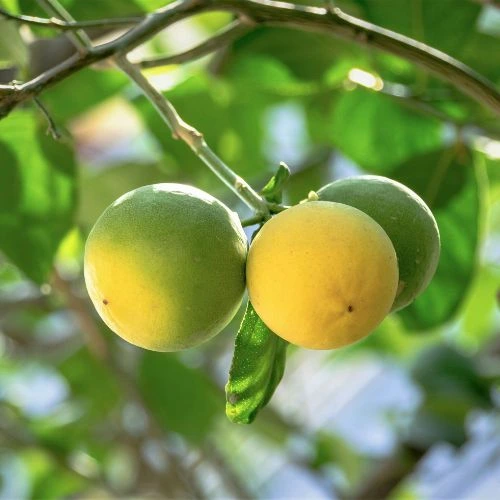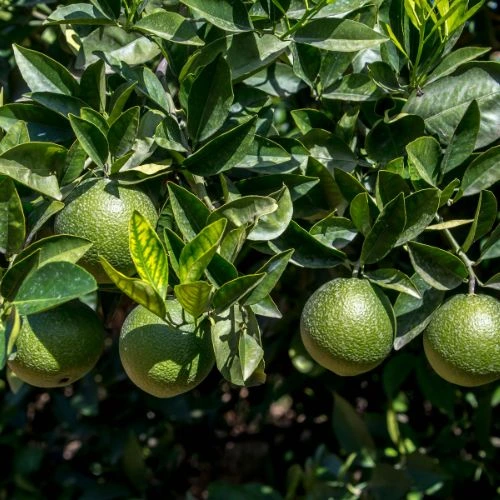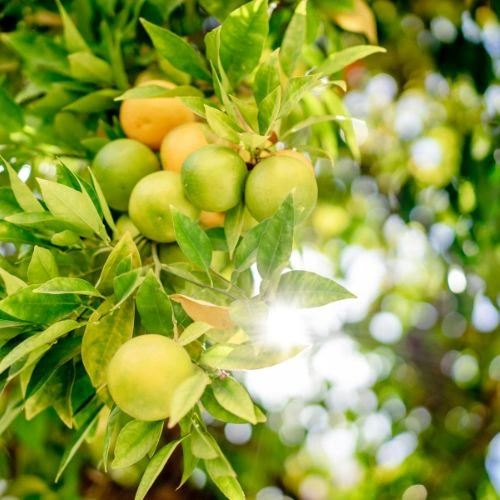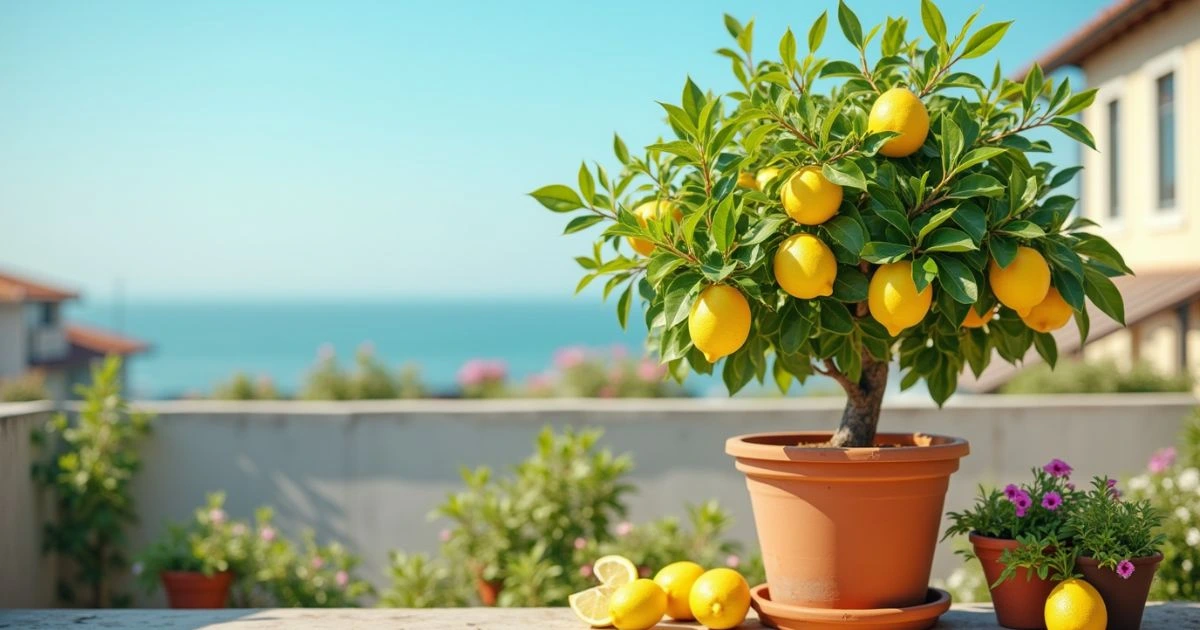In This Article
Imagine stepping onto your patio, the warm sun on your face, and the unmistakable citrusy scent of fresh lemons filling the air. Now picture yourself plucking a golden lemon from your very own lemon tree in a pot, grown with love and care. Whether you dream of a fragrant addition to your urban balcony or want to bring a slice of Mediterranean magic to your backyard, growing a lemon tree in pot is more than gardening—it’s a journey to creating your personal oasis of joy and flavor. Let’s dive into how you can nurture this rewarding experience right at home.
Why Grow a lemon tree in pot?
Growing a lemon tree in a pot offers incredible advantages, making it an ideal choice for gardeners of all skill levels. For starters, it’s a space-saving solution perfect for small backyards, balconies, or patios. Unlike traditional ground planting, container gardening allows you to grow lush citrus trees even in limited spaces.
Another major benefit is mobility. With a potted lemon tree, you can easily move it around to chase the sun, protect it from frost, or bring it indoors during colder months. This makes it especially practical for gardeners living in areas with unpredictable weather or harsh winters.
Beyond practicality, a lemon tree in a pot adds natural beauty and charm to your home. Its glossy green leaves, fragrant blossoms, and vibrant yellow fruits create an eye-catching centerpiece for any indoor or outdoor space. Plus, the fresh, citrusy scent doubles as a natural air freshener, creating a calming and refreshing atmosphere in your home.
Whether you’re an urban gardener with limited space or a seasoned grower looking to experiment with citrus trees, planting a lemon tree in pot is an enjoyable and rewarding project. It’s more than just a gardening endeavor—it’s a way to bring nature’s beauty and freshness right to your doorstep.
Ready to get started? Let’s dive into the essentials for growing your potted lemon tree, from choosing the right container to selecting the perfect variety.
Choosing the Right container for Your Lemon Tree
Selecting the right container is one of the most important steps in growing a healthy and productive lemon tree in pot. The pot you choose directly impacts the tree’s growth, health, and ability to bear fruit, so it’s crucial to get it right from the start.
Size Matters
The size of the pot is key. Aim for a container that’s at least 15–20 inches wide and deep to allow your lemon tree’s roots enough space to grow. Starting with a smaller pot might seem tempting, but it could restrict root growth, stunt the tree’s development, and lead to poor fruit production. A larger pot not only supports healthy roots but also ensures better stability for your tree.
Choose the Best Material
The material of the pot is equally important. Clay pots are breathable and great for avoiding overwatering, but they can be heavy to move. Plastic pots are lightweight and easier to handle, but they may retain more moisture, which requires careful watering. Ceramic pots are visually appealing but tend to be expensive and heavy. Choose the material based on your needs, climate, and ability to move the pot when needed.
Drainage is Crucial
No matter the pot, it must have multiple drainage holes. It is essential to have a good drainage in order to avoid root rot.
- Use saucers sparingly to avoid waterlogging.
- Consider adding pot risers to improve airflow under the container.
By choosing the right pot, you’re giving your lemon tree in pot the best start possible. A sturdy, well-drained container ensures healthy growth and sets the stage for delicious homegrown lemons. Now, let’s move on to selecting the perfect tree variety.
Selecting the Best Lemon Tree Variety for Pots
Choosing the right variety is essential for successfully growing a thriving lemon tree in pot. Not all lemon trees are suited for container gardening, so selecting a variety that grows well in confined spaces is the first step to success.



Best Varieties for Pots
Dwarf lemon tree varieties are the top choice for pots because they grow to a manageable size while still producing plenty of fruit. Among the most widely used and trusted choices are:
- Meyer Lemon: Known for its sweeter flavor and compact size, the Meyer lemon is perfect for potted gardens. It’s also cold-tolerant, making it a great option for regions with mild winters.
- Ponderosa Lemon: This variety produces large, juicy fruits and adapts well to pot growth, though it requires slightly more attention.
- Lisbon Lemon: A classic choice, this variety grows well in containers and offers the traditional tart lemon flavor.
These varieties not only thrive in pots but also bring vibrant greenery and fragrant blossoms to your space.
Why Dwarf Varieties Are Ideal
Dwarf lemon trees are bred for controlled growth, which is ideal for containers. They stay smaller in size, making them easier to manage, while still producing high yields of fruit. Additionally, their root systems are better suited for the limited space in a pot.
Where to Purchase Your Lemon Tree
To ensure a healthy start, purchase your tree from a reputable nursery or garden center. Many local garden stores in the USA offer grafted dwarf lemon trees that are ready to plant in pots. Online stores also provide certified disease-free saplings that can be shipped directly to your home.
Tips for Success
- Choose a tree that’s already established, around 1–2 years old.
- Look for healthy green leaves and a strong trunk.
- Do not select trees that show pest or disease signs.
By selecting the right variety, you set your lemon tree in pot up for success, ensuring a fruitful and manageable tree for years to come. Next, we’ll explore the perfect soil mix to keep your tree thriving.
The Best Soil Mix for Potted Lemon Trees
Creating the right soil mix is vital for the health and productivity of your lemon tree in pot. Lemon trees need soil that provides good drainage while retaining enough moisture to nourish the roots. A balanced soil mix will prevent waterlogging, promote strong root development, and encourage fruit production.
The Ideal Soil Composition
For the best results, use a well-draining, lightweight potting mix specifically formulated for citrus trees. The soil should have a slightly acidic pH of 5.5–6.5, which helps lemon trees absorb essential nutrients. Adding organic compost enriches the soil, providing long-term nutrients to support healthy growth.
Enhancing Drainage
To improve drainage, mix perlite or coarse sand into the potting soil. This prevents compaction and ensures water flows freely, protecting your tree from root rot. Avoid using garden soil, as it is too heavy and can retain excessive water in a container setting.
DIY Soil Mix Ingredients
- High-quality potting mix (citrus-specific if available)
- Organic compost for nutrients
- Perlite or coarse sand for drainage
By using the right soil mix, your lemon tree in pot will thrive, giving you lush foliage and delicious fruits. Next, we’ll cover how to plant your tree step by step.
Planting Your lemon tree in pot
Planting a lemon tree in pot is a simple but essential process to set your tree up for success. Begin by selecting a container with proper drainage holes and filling it with the ideal soil mix.
Step-by-Step Guide
- Prepare the Pot: Fill the pot with your citrus-specific or well-draining soil mix, leaving space at the top.
- Position the Tree: Gently place the lemon tree in the center of the pot. The root ball should sit slightly below the rim, with the trunk upright.
- Fill and Firm: Add more soil around the root ball, pressing gently to secure the tree while avoiding compaction.
- Water Thoroughly: Give the tree a deep watering to settle the soil and eliminate air pockets.
Tips for Success
- Avoid burying the trunk base to prevent rot.
- Stake the tree if needed to keep it stable.
With these steps, your lemon tree in pot is ready to grow and thrive. Up next, we’ll discuss the sunlight and temperature requirements for optimal health.
Caring for Your Lemon Tree in Pot
Proper care ensures your lemon tree in pot thrives and produces healthy, delicious fruits. Focus on three essential aspects: sunlight, watering, and fertilizing.
Sunlight and Temperature Requirements
Lemon trees love sunlight and need 6–8 hours of direct light daily. Place your potted tree in a sunny outdoor spot, like a south-facing patio or balcony. If growing indoors, position it near a south-facing window or supplement with grow lights during winter.
Temperature is also critical. Lemon trees prefer warmth and should be kept between 55°F and 85°F. Protect your tree from frost or extreme heat by moving it indoors or providing shade as needed.
Watering Your lemon tree in pot
Watering is key to keeping your lemon tree healthy. Ensure the soil remains moist but never oversaturated. Overwatering can lead to root rot, while under watering may stress the tree.
- Tip: Check the top inch of soil—water when it feels dry.
- Watch for signs of overwatering (yellow leaves) or underwatering (wilting).
- Mulch the soil surface to retain moisture and block weeds.
Fertilizing Potted Lemon Trees
Potted lemon trees need regular feeding for optimal growth. Use a citrus-specific fertilizer every 4–6 weeks during the growing season (spring to summer). Slow-release formulas or liquid fertilizers work well.
- Do not over-fertilize, as this can cause damage to both the roots and foliage.
- Look for a balanced fertilizer with nitrogen, phosphorus, and potassium for healthy growth and fruiting.
By providing the right care, your lemon tree in pot will stay healthy and productive. With proper sunlight, watering, and feeding, you’ll enjoy fresh lemons year-round. Next, let’s explore tips for pruning and troubleshooting common issues.
Pruning and Maintenance Tips
Regular pruning and maintenance are essential for keeping your lemon tree in pot healthy, vibrant, and productive. Proper care not only ensures a beautiful tree but also promotes better fruit production and prevents common problems.
Why Pruning is Important
Pruning helps shape your tree, removing any dead, damaged, or diseased branches to encourage healthy growth. It also improves airflow and light penetration, which are critical for fruit development and preventing fungal diseases.
Master the Art of Pruning Your Potted Lemon Tree
- Timing: Prune your lemon tree annually, ideally in late winter or early spring, before new growth starts.
- Tools: Use clean, sharp pruning shears to make precise cuts and avoid damaging the tree.
- Steps:
- Remove any dead or crossing branches.
- Trim back any suckers (shoots growing from the base or below the graft line) to direct energy to the main trunk.
- Shape the canopy to maintain balance and allow light to reach all areas.
Ongoing Maintenance
- Pest Management: Watch for common pests like aphids, spider mites, and scale insects. If spotted, use natural remedies like neem oil or insecticidal soap to control infestations.
- Clean Leaves: Dust and grime can accumulate on leaves, especially indoors. Wipe them gently with a damp cloth to allow better photosynthesis.
- Monitor Growth: Check for signs of stress, like yellowing leaves or stunted growth, and adjust care as needed.
By following these pruning and maintenance tips, your lemon tree in pot will remain healthy, well-shaped, and ready to produce an abundance of fruits. Next, we’ll address common problems and their solutions to keep your tree thriving year-round.
Common Problems and How to Fix Them
Growing a lemon tree in pot can sometimes come with challenges, but most issues are manageable with the right care. Here are common problems and effective solutions to keep your tree healthy.
Yellow Leaves
Yellowing leaves are often a sign of nutrient deficiencies or overwatering. If your tree lacks nutrients, use a citrus-specific fertilizer to restore balance. Overwatering, on the other hand, may cause root rot. Ensure your pot has proper drainage and allow the topsoil to dry out slightly between waterings.
Dropping Fruit
Premature fruit drop can result from stress caused by inconsistent watering, temperature fluctuations, or insufficient nutrients. Maintain a consistent watering schedule, protect the tree from extreme temperatures, and regularly fertilize during the growing season.
Pests
Common pests like aphids, spider mites, and scales can weaken your lemon tree in pot. Spot them early and treat with natural remedies like neem oil or insecticidal soap. Regularly inspect leaves, especially the undersides, to catch infestations before they spread.
Poor Fruit Production
If your tree isn’t producing fruit, it may need more sunlight or better pollination. Ensure the tree gets 6–8 hours of direct sunlight daily. For indoor trees, hand-pollinate flowers using a soft brush to mimic natural pollinators.
By addressing these common issues promptly, your lemon tree in a pot will stay healthy and productive, providing you with fresh lemons for years to come.
FAQs About Growing a lemon tree in pot
How long does it take for a potted lemon tree to bear fruit?
A potted lemon tree typically takes 2 to 3 years to start producing fruit, depending on the variety and growing conditions. If you’re growing a lemon tree from seed, it may take 5 to 7 years before it bears fruit. For faster results, consider buying a grafted tree from a nursery.
Do lemon trees need full sun?
Yes! Lemon trees thrive in full sun and need at least 6 to 8 hours of direct sunlight daily for healthy growth and fruit production. If growing indoors, place your lemon tree near a south-facing window or supplement with a grow light to ensure adequate light exposure.
Do lemon trees grow well in pots?
Absolutely! Lemon trees grow well in pots as long as they have proper care. Use a well-draining container, high-quality citrus soil, and ensure the pot has good drainage holes. Regular watering, feeding, and pruning will help your potted lemon tree stay healthy and productive.
What is the best lemon tree to grow in a pot?
The best lemon tree varieties for pots are dwarf and compact types such as:
Meyer Lemon – Popular for its sweet, juicy fruit and compact size.
Ponderosa Lemon – Produces large, flavorful lemons.
Lisbon Lemon – A traditional, tangy lemon that adapts well to pots.
Eureka Lemon – Ideal for year-round fruit production.
These varieties are well-suited for container gardening and thrive in smaller spaces, making them perfect for patios, balconies, and indoor growing.
Can I grow a lemon tree in a pot indoors?
Yes, a lemon tree in pot can thrive indoors with proper care. Place it near a south-facing window to receive 6–8 hours of sunlight daily. If natural light is limited, supplement with grow lights to keep the tree healthy.
Why is my lemon tree not producing fruit?
Lack of sunlight, poor pollination, or nutrient deficiencies can cause this issue. Ensure the tree gets adequate sunlight and use a balanced citrus fertilizer. For indoor trees, hand-pollinate flowers with a soft brush to encourage fruiting.
Conclusion
Growing a lemon tree in a pot brings more than just fresh lemons to your life—it adds beauty, fragrance, and a sense of accomplishment to your space. With the right care, your tree will thrive and reward you with a bountiful harvest for years to come.
Ready to learn more tips for nurturing your garden? Subscribe to our newsletter and discover more gardening insights to help your green thumb flourish.

